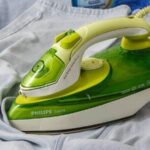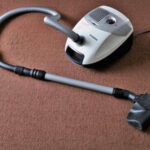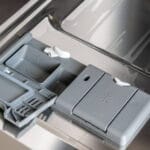I am not a big fan of fabric softener but I get the whole concept of using it. It gives clothes a touch of softness, not to mention the lingering flowerily scents it embeds into the fabric fibers.
A brand such as Snuggle is also great for people with super sensitive skin. It smoothens fabric fibers resulting to reduced skin sensitivity and itchiness.
But when using your favorite softener, the question of where to put the recommended amount in the washer might arise. If your washer does not have a fabric softener dispenser, the question of whether to put it in the bleach dispenser might arise.
Or you might be daydreaming while doing laundry, mistakenly add it into the bleach dispenser then search the correct answer to this question to determine whether the laundry cycle will turn our right.
Read on to know the correct answer to both of these questions.
Can you Put Fabric Softener in the Bleach Dispenser?
You cannot put fabric softener into the bleach dispenser because the two products serve different purposes during the laundry process. Bleach is formulated to serve as a brightener, stain remover and disinfectant.
On the other hand, fabric softener coats clothes with an oily film that makes them soft to the touch and imparts them with a distinctive scent.
Bleach is diluted and dispensed into the washer’s drum after the laundry detergent has finished its job and is rinsed away. This produces maximum efficiency for both bleach and laundry detergent because mixing them reduces the effectiveness of each.
Fabric softener is released from the softener dispenser during the final rinse cycle. If added into the bleach dispenser, it would be dispensed too soon to achieve the desired effect.
What Happens if you Put Fabric Softener in the Bleach Compartment?
There are several things that happen if you place fabric softener into the bleach compartment. Firstly, the bleach compartment dispenses the fabric conditioner at the wrong time. As a result, it is rinsed out from the clothes and as such, they do not feel as soft as they can or smell as good as you would be looking forward to.
If you place fabric conditioner into the bleach dispenser, it is released like bleach into the drum. According to information provided by GEappliances, once the wash cycle gets to the point of utilizing bleach or the contents in the bleach dispenser, the product is directed down a spout or funnel. The spout is located in between the inner basket that holds laundry and the outer tub that contains water.
Bleach sits there and gets diluted well enough to protect the clothes as water fills into the drum. This prevents undiluted bleach from coming into contact with clothes and harming them.
As you know, fabric softener has a certain degree of viscosity. It does not flow or diffuse in water in the same way bleach does. Its thick and stick consistency can clog the bleach dispenser or even worse ruin your machine if it causes build up after sitting repeatedly into the spout that holds bleach before it diluted and released into the inner drum.
Can I put Vinegar in the Bleach Dispenser?
If you are a person that does not believe in fabric softeners, or you are washing clothes that are not fabric softener friendly, you might wonder whether it is appropriate to put vinegar in the bleach dispenser.
Vinegar is a perfect substitute for fabric softener. In is inexpensive and offers quite impressive softening and freshening benefits.
That said, you should never pour vinegar into the bleach compartment especially if you have previously added bleach into the dispenser. Bleach reacts with vinegar to produces toxic chlorine gas
How to Use the Bleach Dispenser
Understanding how a bleach dispenser works and how to use is critical to determining why you should never use it to dispense fabric softener. For starters, the bleach compartment is only meant for dispensing liquid bleach. You cannot use it to add powdered bleach into your washer.
Add powdered bleach directly to the drum because it can clog up the dispenser.
Measure the recommended amount of bleach and add it to the bleach compartment. Do not overfill the dispenser to avoid spillage that can result to damaged garments.
Bleach moves from the dispenser to the funnel in between the inner basket that holds your laundry and the outer tub. During the right time, it gets diluted to a safe level as water fills into the drum.
This action takes place automatically so that undiluted bleach does not come into direct contact with your clothes.
Once diluted bleach comes into contact with your clothes, it removes stains, disinfects and brightens your clothes then it is rinsed away.
How to use the Fabric softener Dispenser
The purpose of the fabric softener compartment is to dispense fabric softener. It is good to use it correctly so that it can dispense contents well without staining your clothes.
There are two most important things to have in in mind. First off, always dilute thick softener to prevent clogging. Secondly, always clean out residue softener from the compartment after you are done using the machine to prevent buildup.
For the first step, measure and put laundry detergent in the designated compartment.
Then pour the recommended amount of fabric softener or less if desired in a measuring cup in a measuring cup. Fill the cup with warm water to dilute the conditioner.
Next, transfer the conditioner into the fabric softener compartment and ensure that it is not overfilled. Lastly, run your washer as normal.
The fabric conditioner gets dispensed into the final rinsing water automatically.
What if my Washer does not have a Fabric Softener Dispenser?
Your machine’s lack of a fabric softener is nothing to worry about. In fact most traditional work horses lack this critical component but it never stops them from doing justice to your clothes.
One way to address the problem is by getting a fabric softener dispenser ball. The ball comes with instructions on how to fill it with your product of choice, then you place on top of your load in the washer, and sit back.
It opens during the final rinse cycle, releases softener evenly to your clothes, and your clothes derive maximum benefits from the product without taking you through any trouble.
Another thing that you can do is to time the wash cycle and add fabric softener to the washer manually. Ideally, the right time is during the final rinse cycle. Just ensure that you add the softener into the water sockets. It can mar your clothes with stains if you pour it directly.
Use the measuring cup to measure the right amount of fabric softener. Next, fill the rest of the measuring cup space with warm water. Mix the two well to dilute the softener then add it to the washer.
If you have a washer that locks after the wash cycle begins, the fabric softener dispenser ball remains the best option.
If you do not like these options, replace fabric softener with dryer sheets. Dryer sheets go to the dryer with your clothes and save you the trouble of getting a fabric softener dispenser ball or timing the right time to add fabric conditioner manually to your washer.
Can I put Fabric Softener in the Laundry Detergent Dispenser?
Putting fabric softener in the detergent dispenser is also not a good idea. The detergent compartment releases contents at the beginning of a wash cycle. This allows clothes to get clean during the wash cycle.
If the content released is a fabric softener, the wash cycle will be like a long rinse cycle. Clothes will not release most of the dirt because fabric softener serves a different purpose. They will only release a tiny bit of soil as a result of agitation and coming into contact with water.
Can You Mix Fabric Softener with Bleach?
There are many misconceptions for mixing different detergents and laundry products. Some can lead you on to think that it is okay to mix fabric softener with bleach.
It is wrong to mix the fabric conditioner with bleach because a chemical reaction between the two can lead to production of a toxic gas. Fabric softeners contain numerous and complex chemicals. Examples include Diethyl ester dimethyl ammonium chloride (DEEDMAC), TEAQ (triethanolamine quat), HEQ (Hamburg esterquat and Distearyldimethylammonium chloride.
Use bleach and fabric softener separately to derive the benefits of both.
Can you Mix Fabric Softener with Detergent?
You should not combine fabric softener with bleach because softener contains cationic surfactants while detergent contains anionic surfactants. Cationic surfactants enhance the softness of fabrics by coating them with an oily film. They also play a critical role in reducing static cling.
Anionic surfactants remove dirt and oil residues from clothes. They are amphiphilic in the sense that they have both polar and non-polar properties. When anionic surfactants combine with water, they remove soil from clothes and keep suspended in the water such that does not bind again to the fabric fibers.
Mixing fabric conditioner with detergent leads to a neutralizing reaction that reduces the effectiveness of both.




